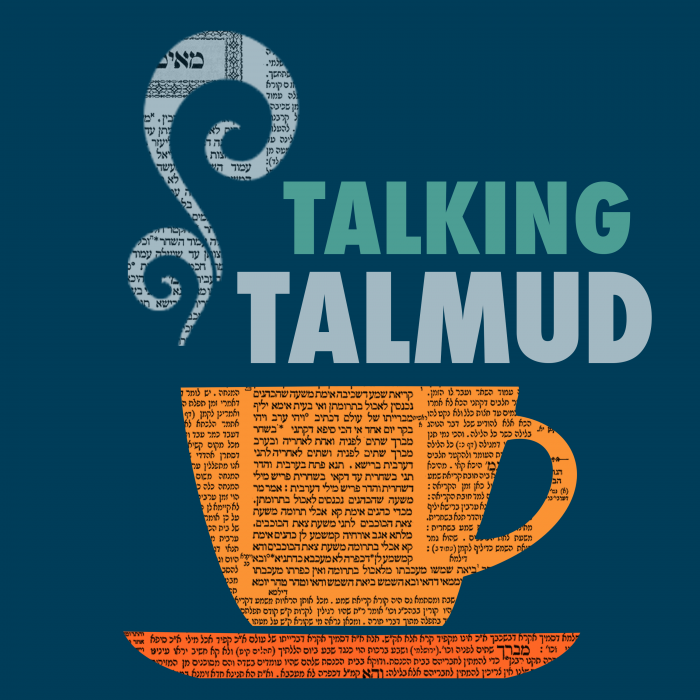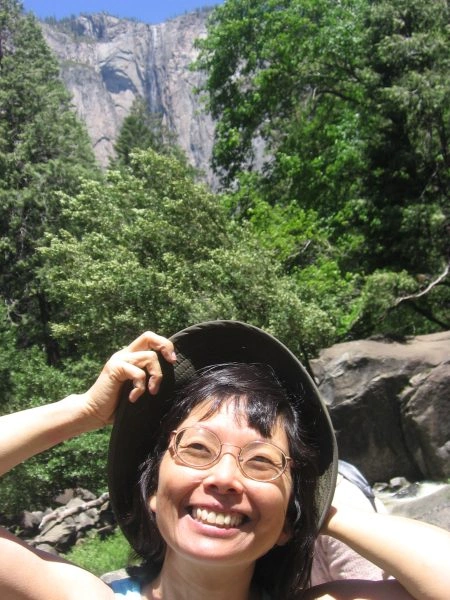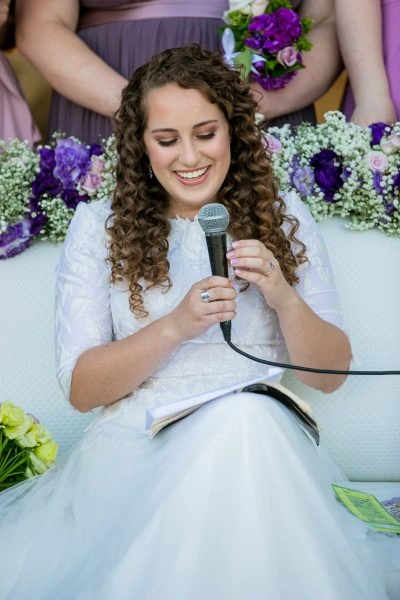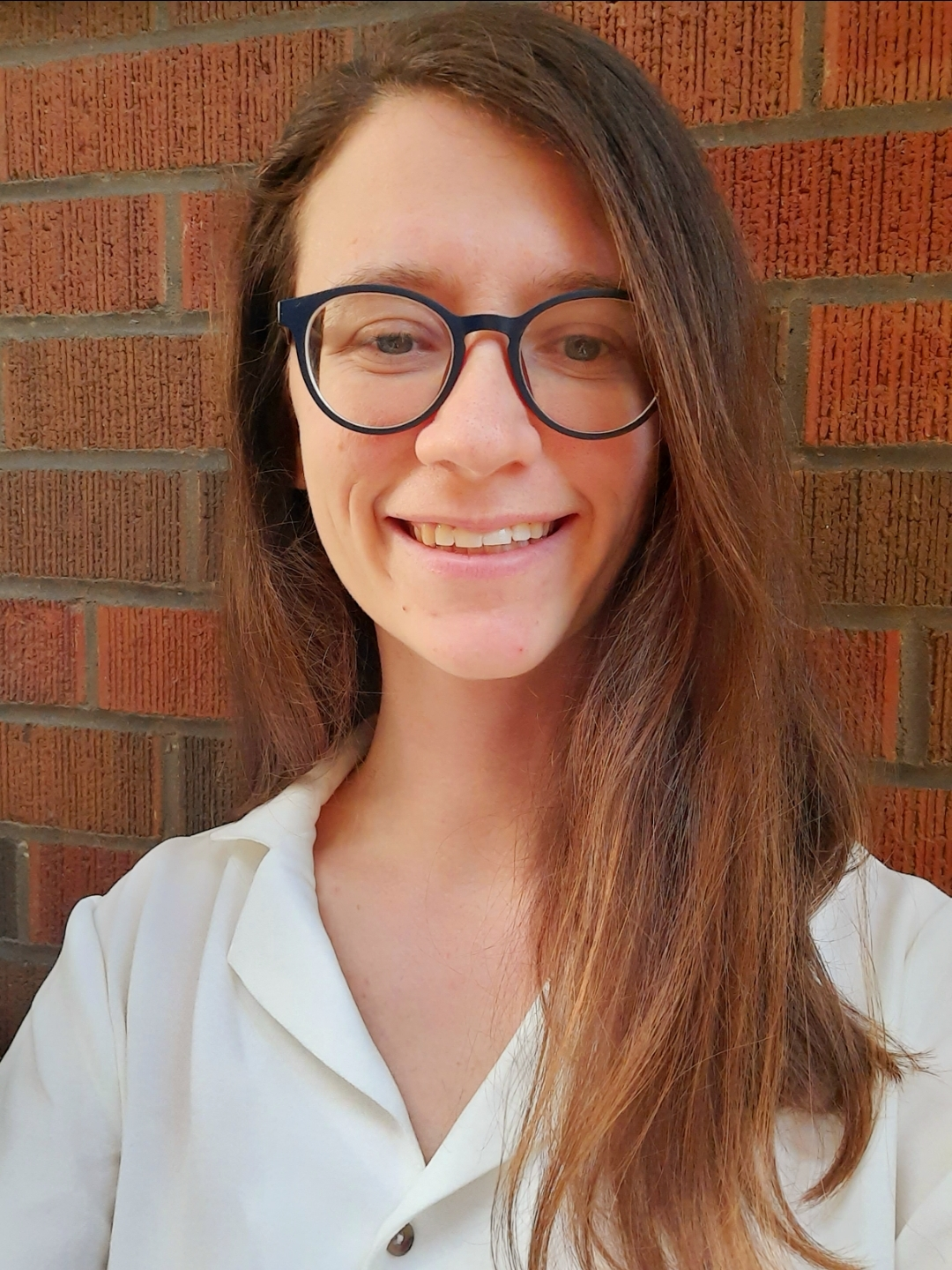Bava Batra 19
לָא מַשְׁכַּחַתְּ לֵיהּ, אִי בְּטַרְפָּא – הָדַר פָּארֵי.
the bees will not find it; if it is referring to a leaf, it will grow back.
וְלֹא נִבְרֶכֶת הַכּוֹבְסִין וְכוּ׳. אָמַר רַב נַחְמָן אָמַר רַבָּה בַּר אֲבוּהּ: לֹא שָׁנוּ אֶלָּא מִן הַמַּחְמְצָן, אֲבָל מִן הַנַּדְיָין – אַרְבַּע אַמּוֹת. תַּנְיָא נָמֵי הָכִי: נִבְרֶכֶת הַכּוֹבְסִין – אַרְבַּע אַמּוֹת. וְהָא אֲנַן תְּנַן שְׁלֹשָׁה טְפָחִים! אֶלָּא לָאו – שְׁמַע מִינַּהּ כִּדְרַב נַחְמָן.
§ The mishna teaches: Nor may one set up a launderer’s pond near his neighbor’s wall unless he distances it three handbreadths from the wall. Rav Naḥman says that Rabba bar Avuh says: They taught this only with regard to a soaking pond, in which soiled clothes are left to soak for several days. But in the case of a washing pond [hanadyan], where clothes are actively cleaned, four cubits are required. That opinion is also taught in a baraita: A launderer’s pond must be kept four cubits from one’s neighbor’s wall. But didn’t we learn in the mishna that one must keep a distance of only three handbreadths? Rather, must one not conclude from the baraita that the statement of Rav Naḥman is correct?
וְאִיכָּא דְּרָמֵי לְהוּ מִירְמֵי, תְּנַן: נִבְרֶכֶת הַכּוֹבְסִין שְׁלֹשָׁה טְפָחִים. וְהָתַנְיָא אַרְבַּע אַמּוֹת! אָמַר רַב נַחְמָן אָמַר רַבָּה בַּר אֲבוּהּ, לָא קַשְׁיָא: כָּאן מִן הַמַּחְמְצָן, כָּאן מִן הַנַּדְיָין. רַב חִיָּיא בְּרֵיהּ דְּרַב אַוְיָא מַתְנֵי לַהּ בְּהֶדְיָא: אֶלָּא אִם כֵּן הִרְחִיק מִשְּׂפַת מַחְמְצָן וְלַכּוֹתֶל שְׁלֹשָׁה טְפָחִים.
And some raise this as a contradiction, and present the mishna and baraita as apparently conflicting sources. We learned in the mishna that a launderer’s pond must be kept three handbreadths from his neighbor’s property. But isn’t it taught in a baraita that four cubits are required? Rav Naḥman says that Rabba bar Avuh says: This is not difficult. Here, the mishna is referring to a soaking pond, which requires three handbreadths; there, the baraita is referring to a washing pond, in which case four cubits are necessary. Rav Ḥiyya, son of Rav Avya, teaches the mishna explicitly as reading: Unless he distanced three handbreadths from the rim of the soaking pond and the wall.
וְסָד בְּסִיד. אִיבַּעְיָא לְהוּ: ״וְסָד בְּסִיד״ תְּנַן, אוֹ דִילְמָא ״אוֹ סָד בְּסִיד״ תְּנַן?
§ The mishna teaches that one who digs a pit must distance it three handbreadths from another’s property and plaster it with lime. A dilemma was raised before the Sages: What is the precise wording of the mishna? Did we learn: And plasters with lime, meaning that the walls must be plastered with lime in addition to distancing the pit three handbreadths, or perhaps we learned: Or plasters with lime, i.e., one may plaster the walls with lime instead of digging the pit at a distance of three handbreadths.
פְּשִׁיטָא דִּ״וְסָד בְּסִיד״ תְּנַן, דְּאִי סָלְקָא דַעְתָּךְ דְּ״אוֹ סָד בְּסִיד״ תְּנַן, אִם כֵּן לִיעָרְבִינְהוּ וְלִיתְנִינְהוּ!
The Gemara answers: It is obvious that we learned: And plasters with lime, as, if it enters your mind that we learned: Or plasters with lime, which is the same as what is stated in the clause of the mishna discussing olive refuse, if so, let the tanna combine them and teach them together. If the same halakha applied in all circumstances, all of the mishna’s cases could be taught together.
דִּילְמָא מִשּׁוּם דְּלָא דָּמֵי הַאי הֶיזֵּיקָא לְהַאי הֶיזֵּיקָא – רֵישָׁא הֶיזֵּיקָא דִמְתוּנָא, סֵיפָא הֶיזֵּיקָא דְהַבְלָא.
The Gemara answers: This is not proof, as perhaps these cases are taught separately because this type of damage is not similar to that type of damage. The first clause of the mishna addresses the issue of damage due to moisture, whereas the last clause addresses the issue of damage due to heat.
תָּא שְׁמַע, רַבִּי יְהוּדָה אוֹמֵר: סֶלַע הַבָּא בְּיָדַיִם – זֶה חוֹפֵר בּוֹרוֹ מִכָּאן, וְזֶה חוֹפֵר בּוֹרוֹ מִכָּאן; זֶה מַרְחִיק שְׁלֹשָׁה טְפָחִים וְסָד בְּסִיד, וָזֶה מַרְחִיק שְׁלֹשָׁה טְפָחִים וְסָד בְּסִיד. טַעְמָא דְּבָא בְּיָדַיִם, הָא לֹא בָּא בְּיָדַיִם – לֹא!
The Gemara suggests: Come and hear a proof from a baraita. Rabbi Yehuda says: With regard to rock that is so soft it crumbles in one’s hands, this one digs his pit from here, on his property, and that one digs his pit from there. This one distances his pit three handbreadths and plasters with lime, and that one distances his pit three handbreadths and plasters with lime. The Gemara analyzes this ruling: The specific reason one must also plaster with lime is that he is using rock that crumbles in one’s hands, from which it may be inferred that if it is rock that does not crumble in one’s hands, one would not be required to plaster with lime as well.
הוּא הַדִּין דְּאַף עַל גַּב דְּלֹא בָּא בְּיָדַיִם נָמֵי סָד בְּסִיד, וּבָא בְּיָדַיִם אִיצְטְרִיכָא לֵיהּ – סָלְקָא דַּעְתָּךְ אָמֵינָא: כֵּיוָן דְּבָא בְּיָדַיִם, לִיבְעֵי רַוְוחָא טְפֵי; קָא מַשְׁמַע לַן:.
The Gemara answers: One could say that the same is true, i.e., that even though he is using rock that does not crumble in one’s hands, he must also plaster with lime. And it was necessary for the tanna to mention the case of rock that crumbles in one’s hands, as it might enter your mind to say that since it crumbles in one’s hands, let us require a greater distance. Therefore, the tanna teaches us that this is not the case.
מַרְחִיקִין אֶת הַגֶּפֶת וְאֶת הַזֶּבֶל וְאֶת הַמֶּלַח וְאֶת הַסְּלָעִים וְכוּ׳. תְּנַן הָתָם: בַּמֶּה טוֹמְנִין וּבַמָּה אֵין טוֹמְנִין?
§ The mishna teaches that one must distance the solid residue of produce that has been pressed free of its oil, and animal manure, and salt, and lime, and rocks three handbreadths from the wall of another, or plaster its receptacle with lime. The Gemara comments: We learned in a mishna there (Shabbat 47b): With what substances may one insulate a pot of cooked food on Shabbat eve, and with what substances may one not insulate it?
אֵין טוֹמְנִין לֹא בַּגֶּפֶת, וְלֹא בַּזֶּבֶל, וְלֹא בַּמֶּלַח, וְלֹא בַּסִּיד, וְלֹא בַּחוֹל – בֵּין לַחִין בֵּין יְבֵשִׁין. מַאי שְׁנָא הָכָא דְּקָתָנֵי סְלָעִים וְלָא קָתָנֵי חוֹל, וּמַאי שְׁנָא הָתָם דְּקָתָנֵי חוֹל וְלָא קָתָנֵי סְלָעִים?
One may insulate the pot neither with the solid residue of produce that has been pressed free of its oil, nor with manure, nor with salt, nor with lime, nor with sand, whether those materials are moist or whether they are dry. All of these materials spontaneously generate heat when piled up for an extended period of time. Therefore, they add heat to the pot they insulate. The Gemara asks: What is different here that the mishna teaches the halakha in the case of rocks and it does not teach the halakha in the case of sand, and what is different there that it teaches the halakha in the case of sand and it does not teach the halakha in the case of rocks?
אָמַר רַב יוֹסֵף: לְפִי שֶׁאֵין דַּרְכָּן שֶׁל בְּנֵי אָדָם לְהַטְמִין בִּסְלָעִים. אֲמַר לֵיהּ אַבָּיֵי: וְכִי דַּרְכָּן שֶׁל בְּנֵי אָדָם לְהַטְמִין בְּגִיזֵּי צֶמֶר וּלְשׁוֹנוֹת שֶׁל אַרְגָּמָן?! דְּתַנְיָא: טוֹמְנִין בְּגִיזֵּי צֶמֶר, וּבְצִיפֵּי צֶמֶר, וּבִלְשׁוֹנוֹת שֶׁל אַרְגָּמָן, וּבְמוֹכִין, וְאֵין מְטַלְטְלִין אוֹתָן!
Rav Yosef says: There is a practical reason for this difference. Rocks are not mentioned there because it is not customary for people to insulate food with rocks. Abaye said to him: And is it customary for people to insulate food with wool fleece and tabs of purple wool? As it is taught in a baraita: One may insulate food with wool fleece; with combed wool clumps, which are unwoven; with tabs of purple wool; and with swatches of soft material; but one may not move them on Shabbat because they are set-aside [muktze].
אֶלָּא אָמַר אַבָּיֵי: ״יַגִּיד עָלָיו רֵעוֹ״; תְּנָא הָכָא סְלָעִים – וְהוּא הַדִּין לְחוֹל, תְּנָא הָתָם חוֹל – וְהוּא הַדִּין לִסְלָעִים. אֲמַר לֵיהּ רָבָא: אִי ״יַגִּיד עָלָיו רֵעוֹ״, לִיתְנִינְהוּ לְכוּלְּהוּ בַּחֲדָא, וְלִיתְנֵי חֲדָא מִנַּיְיהוּ בְּאִידַּךְ – וְהוּא הַדִּין לְאִידַּךְ!
Rather, Abaye said that the tanna follows the biblical aphorism in the verse that states: “Its neighbor tells about him” (Job 36:33), i.e., one example is mentioned and the same applies to the other case. He taught the halakha in the case of rocks here and the same is true of sand; he taught the halakha in the case of sand there and the same is true of rocks. Rava said to Abaye: If this is correct, that “its neighbor tells about him,” let him teach the halakha of all of these examples in one case, and let him teach the halakha of just one in the other case, and it can be said that the same is true with regard to the others.
אֶלָּא אָמַר רָבָא: הָתָם הַיְינוּ טַעְמָא דְּלָא קָתָנֵי סְלָעִים – מִשּׁוּם דִּמְשַׁתְּכִי לַהּ לִקְדֵרָה; הָכָא הַיְינוּ טַעְמָא דְּלָא קָתָנֵי חוֹל – מִשּׁוּם דְּמֵחַמִּימֵי חָיֵים וּמִקָּרִירֵי קָרֵיר.
Rather, Rava said: There, this is the reason that the tanna does not teach the halakha in the case of rocks: Because they break, i.e., scratch, the pot, and consequently people do not use them for insulating food at all. Here, this is the reason that the tanna does not teach the halakha in the case of sand: Because it heats hot items and cools cold items, and therefore it does not cause any damage to the wall.
וְהָא תָּנֵי רַבִּי אוֹשַׁעְיָא: חוֹל! הָתָם בִּמְתוּנָא. תַּנָּא דִּידַן נָמֵי לִיתְנֵי, וְלוֹקְמֵיהּ בִּמְתוּנָא! הָא תְּנָא לֵיהּ אַמַּת הַמַּיִם.
The Gemara asks: But Rabbi Oshaya taught in a baraita that one must distance sand from his neighbor’s wall. The Gemara answers: There, it is referring to damp sand, which must be kept at a distance due to its moisture. The Gemara challenges: Let the tanna of our mishna also teach the halakha in the case of sand and we will interpret it as referring to damp sand. The Gemara answers: This tanna already taught the case of a water channel, which is a source of dampness, and therefore there was no need to mention damp sand as well.
אַטּוּ מִי לָא קָתָנֵי אַמַּת הַמַּיִם – וְקָתָנֵי נִבְרֶכֶת הַכּוֹבְסִין?
The Gemara rejects this answer: That is incorrect, as is that to say that the mishna includes only one example of a source of dampness? Doesn’t the mishna teach the case of a water channel? And yet it also teaches the example of a launderer’s pond. This demonstrates that the mishna teaches many cases, despite the similarity between them, and therefore it should have mentioned the halakha in the case of sand as well.
הָנְהוּ צְרִיכִי; דְּאִי תְּנָא אַמַּת הַמַּיִם – מִשּׁוּם דִּקְבִיעָא, אֲבָל נִבְרֶכֶת הַכּוֹבְסִין, דְּלָא קְבִיעָא – אֵימָא לָא. וְאִי תְּנָא נִבְרֶכֶת הַכּוֹבְסִין – מִשּׁוּם דִּקְווּ וְקָיְימִי, אֲבָל אַמַּת הַמַּיִם – לָא; צְרִיכָא.
The Gemara answers: Both of those particular examples are necessary, as, had the tanna taught only the case of a water channel, one would have claimed that a distance must be kept because it is fixed, i.e., water constantly passes through it. But with regard to a launderer’s pond, which is not fixed, as it sometimes holds water and sometimes does not, one might say that one need not distance it from his neighbor’s property. And conversely, had the tanna taught only the case of a launderer’s pond, one might have said that this must be distanced because its water is fixed and standing in one location and therefore leaks out. But with regard to a water channel, one might say distancing it is not required. Consequently, it is necessary to state both examples. By contrast, including the halakha in the case of sand would not add any novel understanding.
מַרְחִיקִין אֶת הַזְּרָעִים וְאֶת הַמַּחֲרֵישָׁה וְכוּ׳. זְרָעִים – תִּיפּוֹק לֵיהּ מִשּׁוּם מַחֲרֵישָׁה! בְּמַפּוֹלֶת יָד.
§ The mishna teaches: One must distance seeds, i.e., one may not plant seeds, and one may not operate the plow, and one must eliminate urine, three handbreadths from the wall of another. The Gemara asks: Why is it necessary to mention seeds? Let him derive this requirement to distance the seeds due to the requirement to distance a plow, as in any event the ground must be plowed before it can be sown? The Gemara answers: This is referring to planting with a single hand motion, which is performed without plowing.
מַחֲרֵישָׁה – וְתִיפּוֹק לֵיהּ מִשּׁוּם זְרָעִים! בְּחוֹרֵשׁ לְאִילָנוֹת. וְתִיפּוֹק לֵיהּ מִשּׁוּם מַיָּא! תַּנָּא בְּאֶרֶץ יִשְׂרָאֵל קָאֵי, דִּכְתִיב: ״לִמְטַר הַשָּׁמַיִם תִּשְׁתֶּה מָּיִם״.
The Gemara further challenges: The mishna teaches that one must distance a plow; but let him derive this requirement to distance a plow due to the requirement to distance the seeds, as plowing is preparation for planting. The Gemara answers: This is referring to one who plows to prepare the ground for trees. The Gemara challenges: But if so, let him derive this requirement to distance a plow due to the requirement to distance the water. If there are trees, there must be a water channel to irrigate them, and arranging one’s field in such a manner should be prohibited for that reason. The Gemara answers: The tanna is referring to Eretz Yisrael, concerning which it is written: “And drinks water as the rain of heaven comes down” (Deuteronomy 11:11). In Eretz Yisrael, water channels were not needed.
לְמֵימְרָא דִּזְרָעִים
The Gemara asks: Is this to say that seeds
לִצְדָדִין קָא מִשְׁתָּרְשִׁי?! וְהָא תְּנַן: הַמַּבְרִיךְ אֶת הַגֶּפֶן בָּאָרֶץ, אִם אֵין עַל גַּבָּהּ עָפָר שְׁלֹשָׁה טְפָחִים – לֹא יָבִיא זֶרַע עָלֶיהָ;
take root to the sides, i.e., the growing roots spread sideways and cause damage to walls? But didn’t we learn in a mishna (Kilayim 7:1): With regard to one who bends a branch of a grapevine into the ground so that it strikes roots and produces a new vine, if it does not have three handbreadths of earth over it he may not plant a seed above it, as he would thereby transgress the prohibition of diverse kinds?
וְתָנֵי עֲלַהּ: אֲבָל זוֹרֵעַ אֶת הַצְּדָדִין אֵילָךְ וְאֵילָךְ. אָמַר רַבִּי חַגָּא בְּשֵׁם רַבִּי יוֹסֵי: מִפְּנֵי שֶׁמַּחֲלִידִין אֶת הַקַּרְקַע וּמַעֲלִין עָפָר תִּיחוּחַ.
And it is taught with regard to this mishna: But one may plant on either side of that bent branch. This indicates that there is no concern that the roots of the seeds will spread out sideways. Rabbi Ḥagga says in the name of Rabbi Yosei: The issue here is not that the roots will spread out sideways and reach the wall. Rather, it is prohibited to plant seeds near one’s neighbor’s property because they break up the ground and cause loose soil to rise up, which damages the foundation of the wall.
וְאֶת מֵי רַגְלַיִם מִן הַכּוֹתֶל – שְׁלֹשָׁה טְפָחִים וְכוּ׳. אָמַר רַבָּה בַּר בַּר חָנָה: מוּתָּר לָאָדָם לְהַשְׁתִּין מַיִם בְּצַד כּוֹתְלוֹ שֶׁל חֲבֵירוֹ, דִּכְתִיב: ״וְהִכְרַתִּי לְאַחְאָב מַשְׁתִּין בְּקִיר, וְעָצוּר וְעָזוּב בְּיִשְׂרָאֵל״. וְהָא אֲנַן תְּנַן: וְאֶת מֵי רַגְלַיִם מִן הַכּוֹתֶל – שְׁלֹשָׁה טְפָחִים! הָתָם בְּשׁוֹפְכִין.
§ The mishna teaches: And urine must be kept at a distance of three handbreadths from the wall of one’s neighbor. Rabba bar bar Ḥana says: It is permitted for a person to urinate alongside the wall of another, as it is written: “And I will cut off from Ahab those who urinate against the wall, and him that is shut up and him that is left at large in Israel” (I Kings 21:21). As the verse employs the term “those who urinate against the wall” to mean males, it seems that urinating against a wall was a common practice. The Gemara asks: But didn’t we learn in the mishna that urine must be kept a distance of three handbreadths from the wall? The Gemara answers: There, the mishna is referring to urine that is poured from a chamber pot, as opposed to urine that is passed from the body.
תָּא שְׁמַע: לֹא יִשְׁפּוֹךְ אָדָם מַיִם בְּצַד כּוֹתְלוֹ שֶׁל חֲבֵירוֹ – אֶלָּא אִם כֵּן הִרְחִיק מִמֶּנּוּ שְׁלֹשָׁה טְפָחִים! הָתָם נָמֵי בְּשׁוֹפְכִין.
The Gemara suggests: Come and hear a baraita: A person may not pour water at the side of the wall of another unless he distances the water three handbreadths from it. If pouring water is prohibited, then all the more so should urination be prohibited. The Gemara explains: There too, it is referring to urine that is poured from a chamber pot.
תָּא שְׁמַע: לֹא יַשְׁתִּין אָדָם מַיִם בְּצַד כּוֹתְלוֹ שֶׁל חֲבֵירוֹ – אֶלָּא אִם כֵּן הִרְחִיק מִמֶּנּוּ שְׁלֹשָׁה טְפָחִים. בַּמֶּה דְּבָרִים אֲמוּרִים – בְּכוֹתֶל לְבֵינִים, אֲבָל בְּכוֹתֶל אֲבָנִים – בִּכְדֵי שֶׁלֹּא יַזִּיק. וְכַמָּה? טֶפַח. וְשֶׁל צוּנְמָא – מוּתָּר. תְּיוּבְתָּא דְּרַבָּה בַּר בַּר חָנָה, תְּיוּבְתָּא.
The Gemara suggests: Come and hear another proof from a baraita: A person may not urinate alongside the wall of another unless he distances himself three handbreadths from it. In what case is this statement said? It is said in the case of a brick wall. But in the case of a stone wall, one must distance himself enough so that it does not cause damage. And how far must he distance himself? One handbreadth. And if there is hard rock present, it is permitted to urinate there. The Gemara comments: The refutation of the opinion of Rabba bar bar Ḥana is a conclusive refutation, and his ruling is rejected.
וְהָא רַבָּה בַּר בַּר חָנָה – קְרָא קָאָמַר! הָתָם הָכִי קָאָמַר: אֲפִילּוּ מִידֵּי דְּדַרְכֵּיהּ לְאַישְׁתּוֹנֵי בְּקִיר לָא שָׁבֵיקְנָא לֵיהּ, וּמַאי נִיהוּ? כַּלְבָּא.
The Gemara asks: But Rabba bar bar Ḥana stated a verse in support of his opinion; how can the baraita rule counter to what is written in a verse? The Gemara answers: This is what it is saying there, i.e., this is the meaning of that verse: I will not even leave Ahab something whose manner is to urinate against a wall. And what is that? A dog. According to this interpretation, the verse is not referring to people at all.
אָמַר רַבִּי טוֹבִי בַּר קִיסְנָא אָמַר שְׁמוּאֵל: רָקִיק אֵינוֹ מְמַעֵט בַּחַלּוֹן. מַאי אִירְיָא רָקִיק? אֲפִילּוּ עָבֶה נָמֵי!
§ Rabbi Tovi bar Kisna says that Shmuel says: A wafer does not reduce the dimensions of a window. When a corpse, or a significant part thereof, is in one room, its impurity can spread to a room adjacent to it if there is a window of a certain size between the rooms. Shmuel states that when one puts a wafer in a window, the wafer is not considered an obstruction, so the size of the opening as relevant to this halakha remains the same. The Gemara asks: Why discuss specifically this case? Why does Shmuel teach this halakha with regard to a wafer? Even a thick chunk of bread also does not reduce the dimensions of a window.
לָא מִיבַּעְיָא קָאָמַר: לָא מִיבַּעְיָא עָבֶה – כֵּיוָן דְּאִיחֲזִי לֵיהּ, לָא מְבַטֵּיל לֵיהּ; אֲבָל רָקִיק, דְּמִמְּאִיס – אֵימָא בַּטּוֹלֵי מְבַטֵּיל לֵיהּ; קָא מַשְׁמַע לַן.
The Gemara answers: Shmuel is speaking utilizing the style of: It is not necessary, as follows: It is not necessary to state this halakha with regard to thick bread. Since it is fit for him to consume, he does not nullify it, i.e., he does not plan to leave it in the window for an extended amount of time. But in the case of a wafer, which becomes disgusting when placed in a window, I might say that he does nullify it and it becomes part of the house, thereby reducing the size of the window. To counter this, Shmuel teaches us that even a wafer is not nullified, as it can be used to feed animals, as one is not particular about their food. Therefore, the wafer does not become part of the window in which it is placed.
וְתִיפּוֹק לֵיהּ דְּהָוֵה לֵיהּ דָּבָר שֶׁהוּא מְקַבֵּל טוּמְאָה, וְכׇל דָּבָר שֶׁהוּא מְקַבֵּל טוּמְאָה – אֵינוֹ חוֹצֵץ בִּפְנֵי הַטּוּמְאָה! שֶׁנִּילֹשׁ בְּמֵי פֵירוֹת.
The Gemara challenges: And let him derive this halakha from the fact that a wafer is an item that is susceptible to ritual impurity, and any item that is susceptible to impurity does not serve as a barrier against the spread of impurity. The Gemara explains: This is referring to a wafer that was kneaded in fruit juice, which is not one of the liquids that renders food susceptible to ritual impurity, and therefore the wafer is not susceptible to ritual impurity. Consequently, one might have thought that it serves as a barrier before ritual impurity and reduces the dimensions of the window.
מֵיתִיבִי: קוּפָּה מְלֵאָה תֶּבֶן, וְחָבִית מְלֵאָה גְּרוֹגְרוֹת, הַמּוּנָּחִים בַּחַלּוֹן – רוֹאִין, כֹּל שֶׁאִילּוּ יִנָּטְלוּ וִיכוֹלִין תֶּבֶן וּגְרוֹגְרוֹת לַעֲמוֹד בִּפְנֵי עַצְמָן – חוֹצְצִין, וְאִם לָאו – אֵין חוֹצְצִין. וְהָא תֶּבֶן חֲזֵי לִבְהֶמְתּוֹ!
The Gemara raises an objection to Shmuel’s opinion from a mishna (Oholot 6:2): With regard to a basket that is full of straw, or an earthenware barrel full of dried figs, which are placed in a window, one considers: If the straw or dried figs would stand on their own were the basket or barrel removed, then they would serve as a barrier against the spread of impurity. But if they would not stand on their own they would not serve as a barrier. The Gemara explains the objection: But why should the straw or dried figs serve as a barrier? Even straw that can stand on its own is fit for feeding to one’s animal and will likely be removed from the opening, which means it should not be considered part of the window.
בְּסַרְיָא. חֲזֵי לְטִינָא! דְּאִית בֵּיהּ קוֹצֵי. חֲזֵי לְהַסָּקָה! בִּמְתוּנָא. חֲזֵי לְהֶסֵּק גָּדוֹל! הֶסֵּק גָּדוֹל לָא שְׁכִיחַ.
The Gemara answers: The ruling of the mishna is stated with regard to rotted straw, which is unfit for animal consumption. The Gemara asks: But it is fit for use in the making of clay for bricks. The Gemara answers: This is referring to straw that has thorns in it and therefore is not fit for making bricks. The Gemara challenges: Even so, it is fit for kindling a fire. The Gemara answers that this is referring to wet straw. The Gemara responds: Nevertheless, it is fit for kindling a large fire. If one builds a large fire, wet straw will dry and become ignitable. The Gemara answers: A large fire is not common, and therefore, in all likelihood, the straw will remain in the window.
גְּרוֹגְרוֹת – הָא חֲזוּ לֵיהּ! אָמַר שְׁמוּאֵל: בְּשֶׁהִתְרִיפוּ. וְכֵן תָּנֵי רַבָּה בַּר אֲבוּהּ: בְּשֶׁהִתְרִיפוּ.
The Gemara further asks: But dried figs are fit for him to consume, and he will certainly remove them. Consequently, they should not be considered fixed in their place. Shmuel says: This is referring to a case where the figs became worm infested [beshehitrifu]. And so Rabba bar Avuh teaches: This is referring to a case where the figs became worm infested.
הַאי חָבִית, הֵיכִי דָּמְיָא? אִי דְּפוּמָּא לְבַר –
The Gemara clarifies: What are the exact circumstances of this barrel that held the dried figs? If this is referring to a case where its opening faced outward, i.e., not toward the source of the ritual impurity,






















